| Article ID | Journal | Published Year | Pages | File Type |
|---|---|---|---|---|
| 2011927 | Pharmacological Reports | 2012 | 10 Pages |
BackgroundAlendronate can induce esophagitis and stomach ulceration requiring the concurrent use of drugs which decrease HCl production. The aim of the present study was to investigate the effect of concurrent administration of proton pump inhibitors, omeprazole or pantoprazole, and alendronate on the mechanical properties of long bones in bilaterally ovariectomized (OVX) rats.MethodsThe experiments were carried out on 3-month-old Wistar rats, divided into following groups: non-ovariectomized control rats, OVX control rats, OVX rats administered omeprazole or pantoprazole, OVX rats administered alendronate, OVX rats administered alendronate and omeprazole or pantoprazole. The drugs were administered to the rats for 28 days: alendronate at a dose of 3 mg/kg po, omeprazole or pantoprazole at a dose of 3 mg/kg ip. Mechanical properties of tibial metaphysis, femoral diaphysis and femoral neck were assessed. Bone macrometric parameters, mass and mass of bone mineral were also examined in the tibia and femur.ResultsEstrogen deficiency caused development of osteopenia with significant worsening of bone mechanical properties. Alendronate counteracted the deleterious changes in bone mechanical properties of the tibial metaphysis and femoral neck induced by estrogen deficiency. Pantoprazole worsened mechanical properties of the tibia in estrogen-deficient rats. Omeprazole or pantoprazole administered concurrently with alendronate attenuated the effect of alendronate on mechanical properties of the tibial metaphysis and femoral neck in ovariectomized rats. The unfavorable effect of pantoprazole was stronger than that of omeprazole.ConclusionProton pump inhibitors weakened the protective effect of alendronate on bone mechanical properties in estrogendeficient rats.
